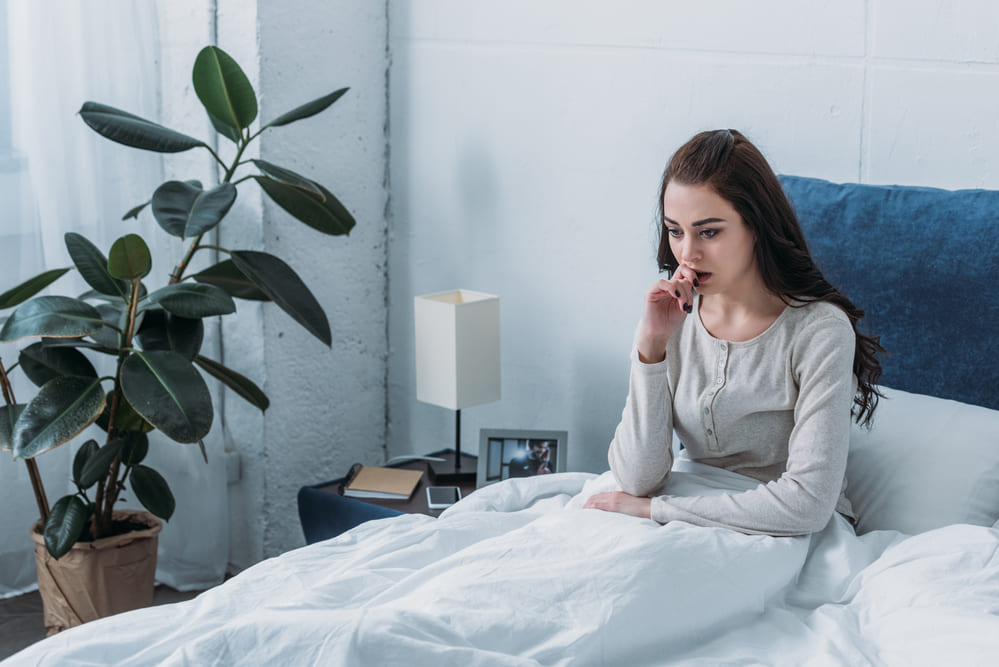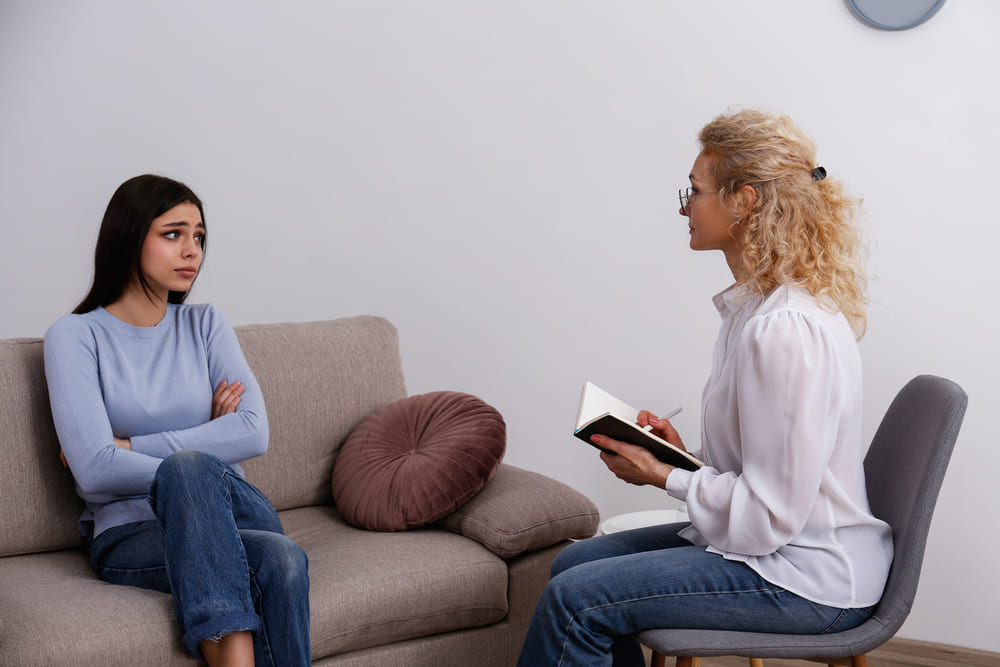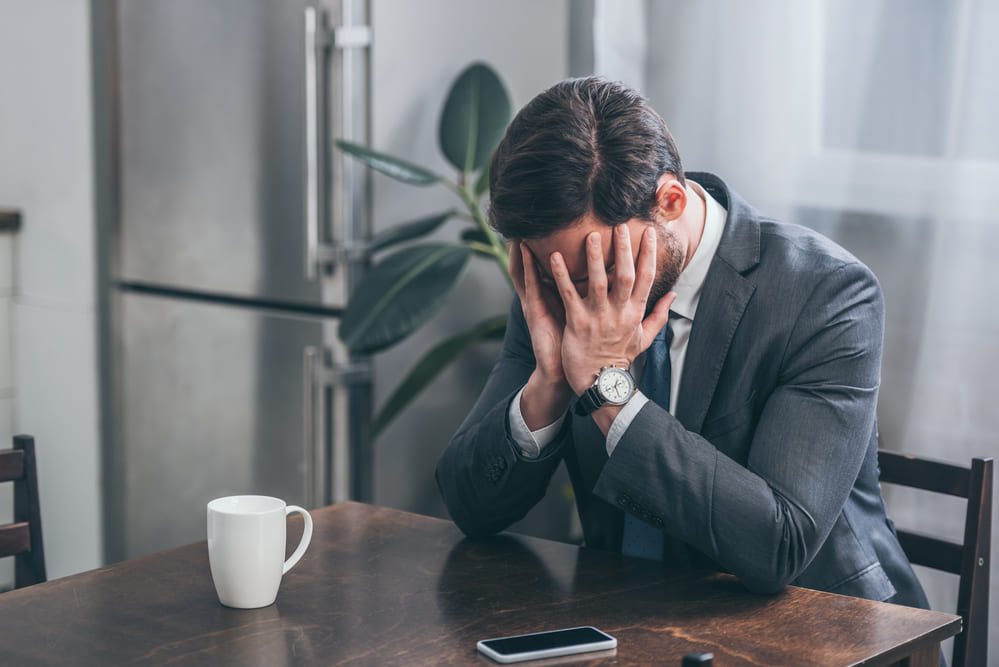While everyone will experience anxiety from time to time for some people the intrusive thoughts and fear never go away. A person’s anxiety becomes an anxiety disorder when it doesn’t go away and begins to interfere with our work and relationships. Anxiety disorders are the most common mental illness in the United States, affecting 19% of Americans and worldwide, the World Health Organization (WHO) states that 301 million people were living with an anxiety disorder in 2019. If you’re not living with an anxiety disorder you likely know someone with any type of anxiety disorder.

What Are Anxiety Disorders? Anxiety Disorder Types and Symptoms
Anxiety is a normal emotion that everyone experiences. It helps us recognize threats and danger. However, it becomes a disorder when anxiety interferes with our lives. It can cause problems at work, school, and in our relationships. Despite what we’ve learned over the years about different anxiety disorder types, we still don’t know exactly what causes someone to develop an anxiety disorder while others don’t. Some of the causes include genetics, environmental stress, and drug withdrawal. Life experiences such as trauma, chronic illness, and substance use disorders are risk factors for developing an anxiety disorder.
Symptoms of anxiety disorders can include
- Feelings of panic, fear, or danger
- Problems falling and staying asleep or sleeping too much
- Physical symptoms such as muscle aches, stomach aches, and unexplained pain
- Being easily irritated and/or fatigued
- Fidgeting and an inability to be still
There are many types of anxiety disorders and depending on which anxiety disorder you’re living with your symptoms and treatment may vary. Additionally, anxiety disorders vary across different communities. Women are more likely than men to live with an anxiety disorder while Black Americans are 20% more likely to have an anxiety disorder than the general public.
Many Kinds of Anxiety Disorders
The different types of anxiety disorders range from Generalized Anxiety Disorder (GAD), Post-traumatic Stress Disorder (PTSD), and specific phobias with some types affecting certain groups more than others. The American Psychiatric Association estimates the following percentage of Americans live with these various anxiety disorders:
- Social Anxiety Disorder: 7%
- Panic Disorder: 2% – 3%
- Generalized Anxiety Disorder: 2%
Although the different types of anxiety disorder can share the symptoms that were already mentioned, what anxiety focuses on varies. Some major types of anxiety disorders are:
Generalized Anxiety Disorder (GAD)
GAD is characterized by excessive and persistent worry about everyday things or ‘minor’ things such as appointments or car repairs. A diagnosis of GAD requires the person to have experienced frequent anxiety that interferes with their lives for at least several months. Despite its prevalence, only 43% of those living with GAD receive treatment. And women are twice as likely to have GAD.
Panic Disorder
During their lifetime, many people will experience panic attacks, but someone with a panic disorder experiences them so frequently that it interferes with their daily lives. During a panic attack, a person may experience a racing heart, sweating, quick and shallow breathing, dizziness, or abdominal distress. People with panic disorder often describe feeling like they’re having a heart attack or even like they’re dying during a panic attack. The Department of Health and Human Services reports that women are also 2 times more likely than men to have a panic disorder. And people with other types of anxiety disorders can also experience panic attacks.

Post-Traumatic Stress Disorder (PTSD)
PTSD can result after a person experiences a traumatic event. While it’s often associated with soldiers returning from combat, it can affect anyone who has experienced physical or mental trauma. In the US, nearly 4% of people have PTSD and women are 5 times more likely to be diagnosed with it. Rape is the most common experience causing PTSD. Among those who have experienced rape, 65% of men and 46% of women will develop PTSD.
Obsessive-Compulsive Disorder (OCD)
Many people often joke that they have OCD because they want their spaces to be clean and orderly. However, that’s an oversimplification and often incorrect understanding of what OCD is. The National Institute of Mental Health defines OCD as “often a long-lasting disorder in which a person has uncontrollable, reoccurring thoughts (obsessions), and behaviors (compulsions) that they feel the urge to repeat over and over”. While obsessions can be about germs or cleanliness, they can also be about counting or needing a specific number of an item or needing to check that a stove is off or the door is locked. The repetitive behaviors are performed in hopes of lessening the thoughts. At best, they may temporarily relieve the thoughts but the inability to permanently get rid of the obsessive thoughts causes increasing anxiety.
Social Anxiety Disorder (Previously Known As Social Phobia)
The US Department of Health and Human Services defines social anxiety disorder as “an anxiety disorder characterized by overwhelming anxiety and excessive self-consciousness in everyday social situations”. People with this disorder may have anxiety around one type of situation, such as public speaking or eating in front of others, or they may experience anxiety whenever they’re around other people.

What Does All Of This Mean? Can You Have More than One Type of Anxiety Disorder?
The various types of anxiety disorders are prevalent in the United States and across the world. Despite the large number of people living with an anxiety disorder, there is still much stigma surrounding them. This stigma can prevent people from seeking help and support, causing them needless suffering and often isolating them from their families and communities. Compounding this, it’s possible to have more than one type of anxiety disorder, and often someone with an anxiety disorder will also have other conditions such as depression.
If you or anyone you know is experiencing symptoms that are interfering with your life, you should talk to your family doctor. There are several different treatment options for anxiety disorders including medication, talk therapy, support groups, and mindfulness. Frequently, a combination of treatments is used to achieve as much relief as possible. If you choose to use medication to help your anxiety disorder, your family doctor will often refer you to a psychiatrist (or a psychiatric nurse practitioner) to help you find the most appropriate medication for you. To pursue talk therapy, you’ll work with a therapist. Support groups are another resource that can help people with anxiety disorders.
Anxiety is a normal emotion that becomes debilitating for too many people. But no one needs to suffer alone. There are resources and treatment options available. Additionally, education about anxiety disorders and other mental illnesses is growing which is helping to reduce the stigma surrounding these conditions. The reduced stigma makes it easy to discuss experiences and seek support. If you think you may have an anxiety disorder, discuss your concerns with your doctor. If it feels safe to you, talk to your friends and family as well. Let them know what you’re experiencing and how they can support you. You may find out that someone you already know has also been living with an anxiety disorder and you’re not alone.



